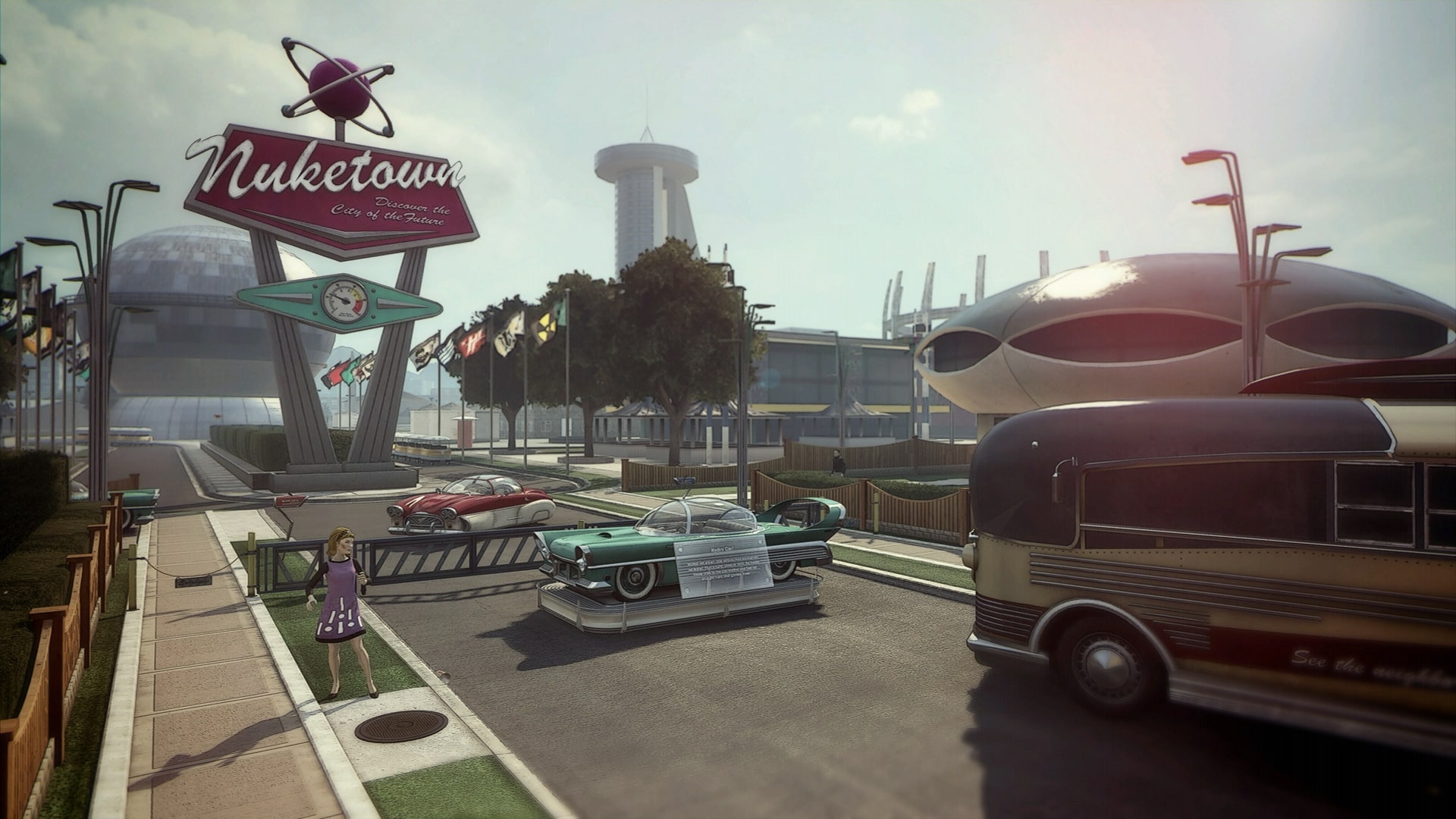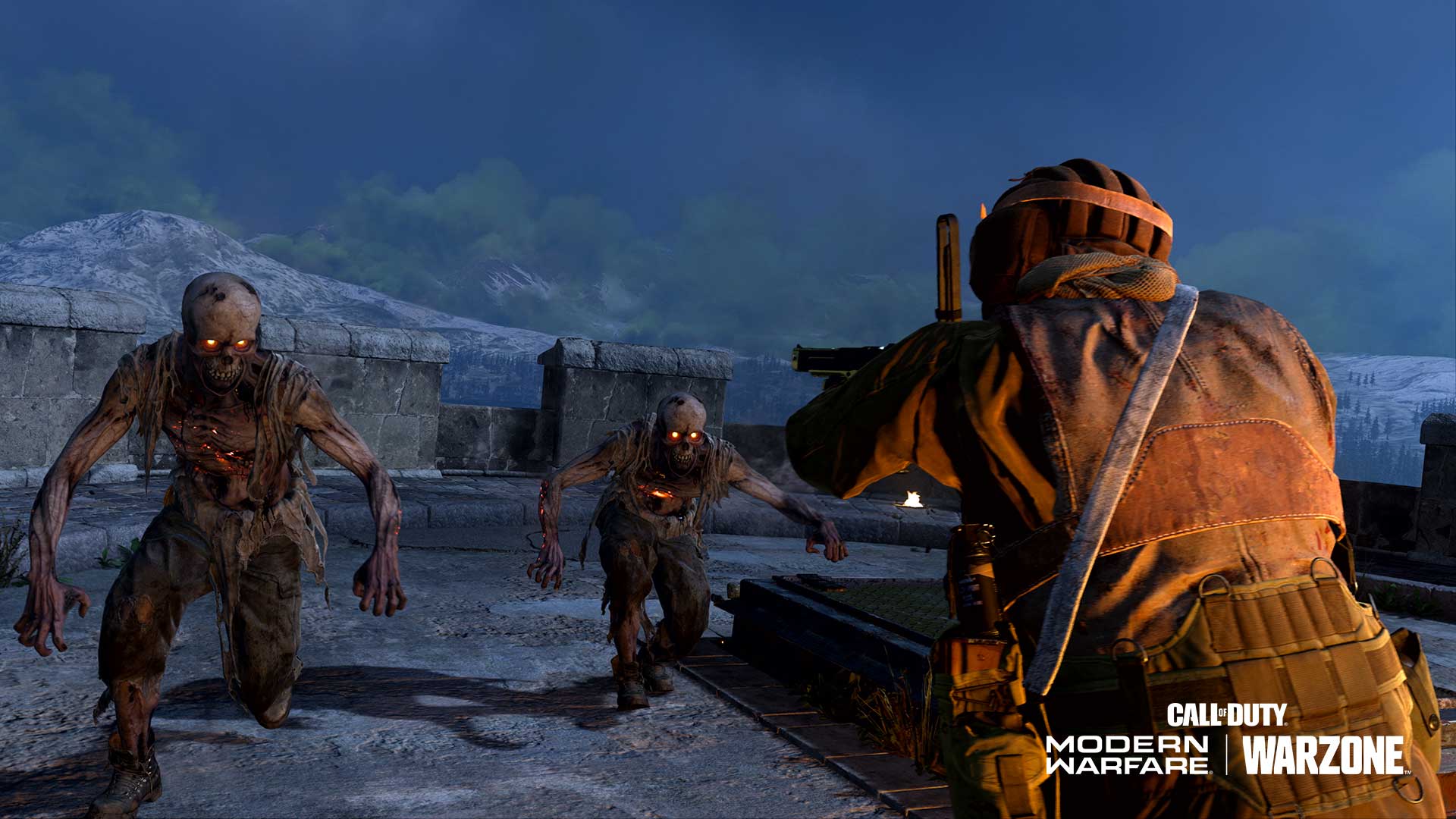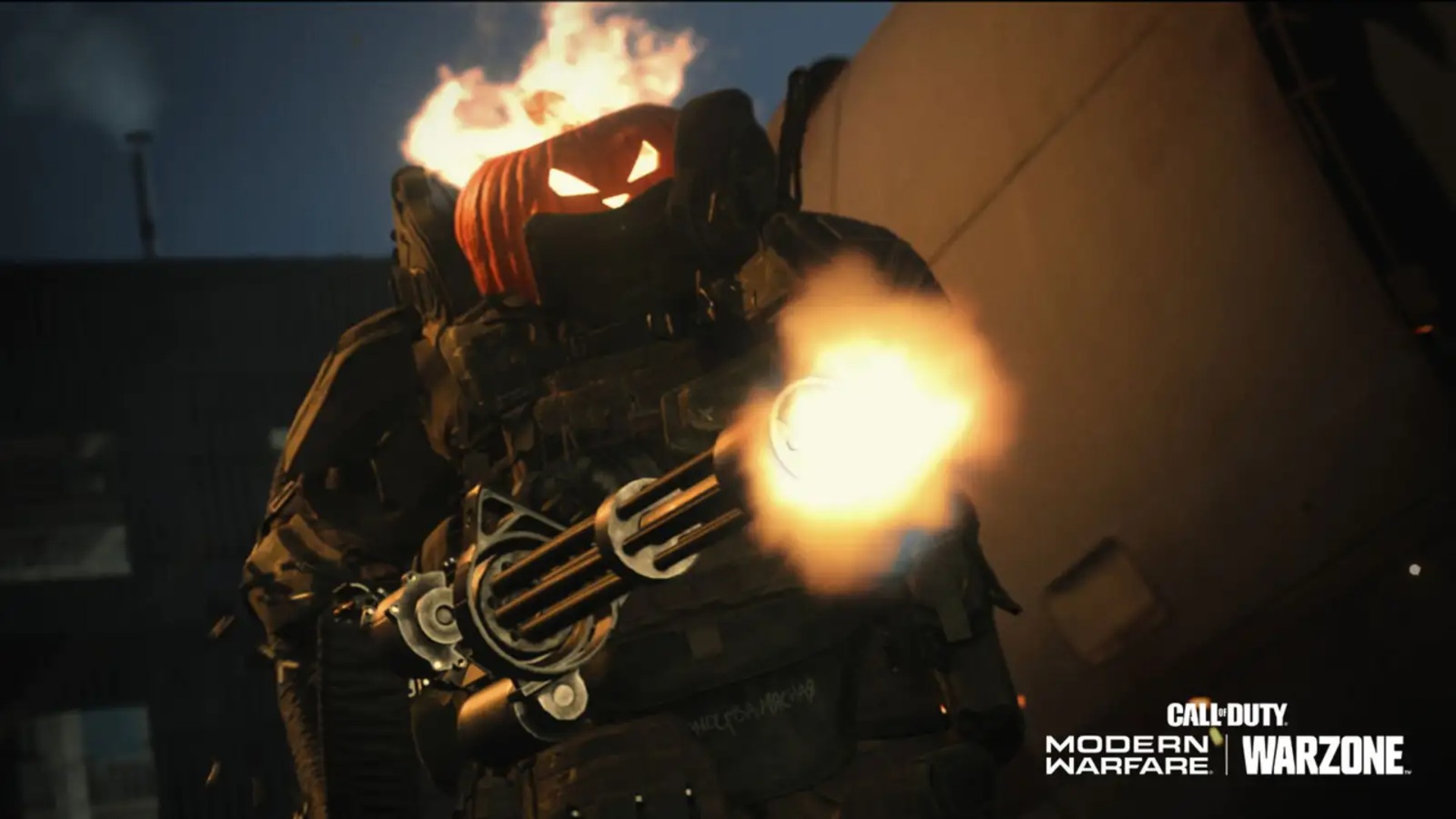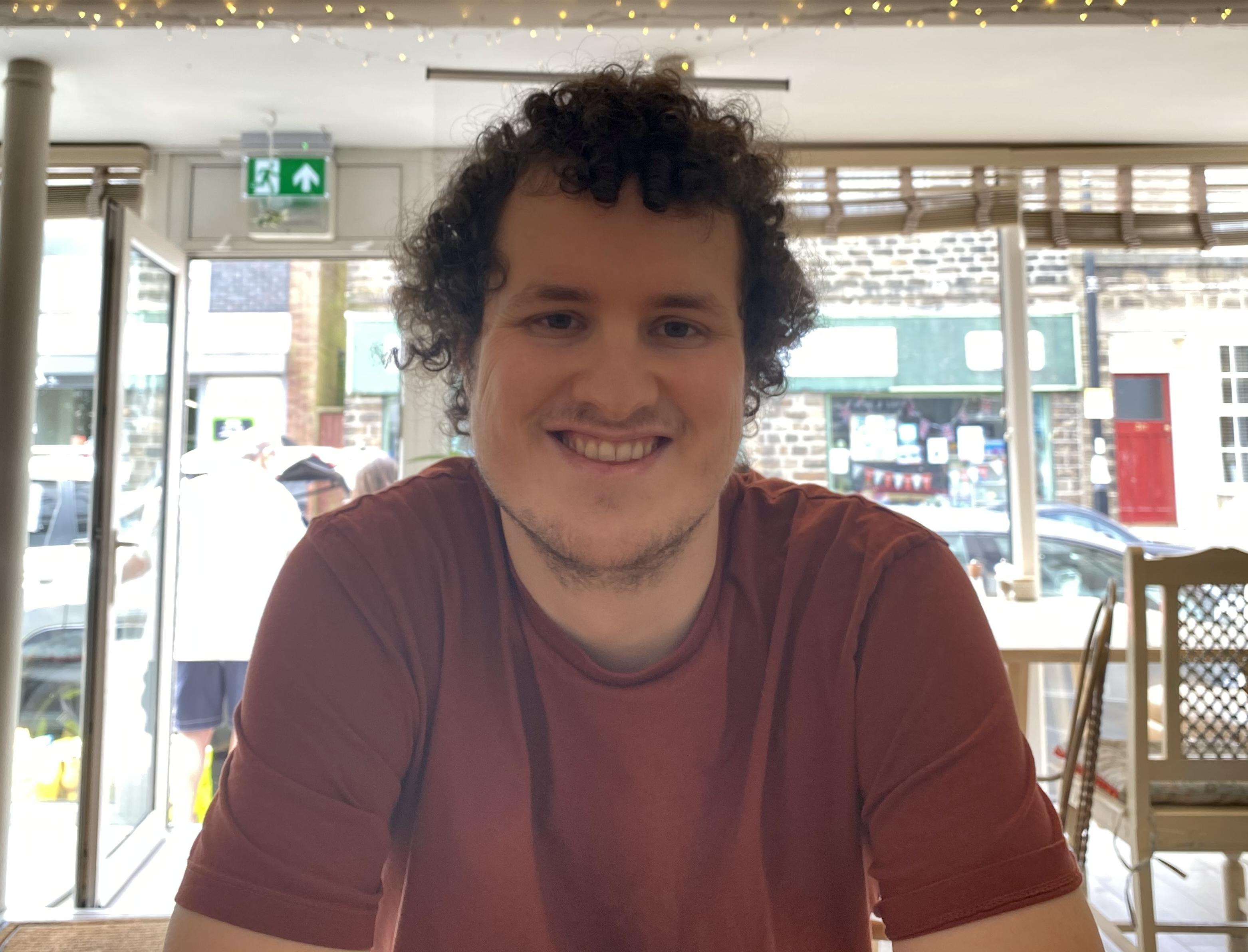With Haunting of Verdansk, Warzone has found the perfect way to segue into Call of Duty: Black Ops Cold War
Halloween marked a tonal transition as Warzone makes room for the Black Ops universe

“Your teammate has become a zombie,” mutters my handler over comms. He doesn’t sound frightened - he’s simply keeping me abreast of a developing situation on the ground. Verdansk is haunted, now, and the disavowed agents and intelligence analysts at the edge of the action have adapted instantly, folding the language of pulp horror into their military lingo. It’s daft, it’s straight-faced, and it smoothly sets the table for Call of Duty: Black Ops Cold War.
Activision has strong incentives to fuse Call of Duty: Warzone and the new Black Ops. For one, it’s an opportunity to market the new full-price Call of Duty to Warzone’s vast audience - over 75 million when last reported in August. And in turn, Warzone benefits from the characters and settings of the beloved Black Ops series, a welcome jetwash that should leave the battle royale’s Eastern European backyard looking fresh and new.
But it’s a really difficult ask for Activision’s developers. From the beginning, Warzone has been fundamentally rooted in Infinity Ward’s Call of Duty: Modern Warfare - its engine, story, and intimate skirmishes all tied to 2019’s reboot. That’s an issue when Treyarch, which makes the Black Ops games, has traditionally worked independently - maintaining its own offshoot of the Call of Duty engine, and developing a distinctly edgy tone for its games.


The real-life Nuketown: Where Call of Duty got its most iconic map
For a long while, fans speculated that relations between Infinity Ward and Treyarch were frosty, despite their geographical proximity in LA. Back in 2012, former Infinity Ward creative strategist Robert Bowling told GameTrailers that each of the two studios possessed a completely different “design state of mind”.
“We don’t work together, we don’t collaborate,” he said. “The teams are very focused on what we’re doing and we really don’t let what happens in another game impact that.”
Evidently, that approach is outdated. Where annual COD games once existed separately in their own plastic boxes, Warzone has ushered in a connected service game mentality for the series. In order to switch out Modern Warfare for Black Ops Cold War, the COD studios are now required to work together, pulling Warzone’s tablecloth away and replacing it without disturbing the feast.
Dead of night

The key connecting factor may well be Raven Software. The third party in Infinity Ward and Treyarch’s non-committal relationship, Raven has been the backbone of both Warzone’s development and the single-player campaign of Black Ops Cold War. In other words, it’s steeped in the very specific tone of Treyarch’s universe - the pairing of schlocky horror with unease over CIA programming projects and proxy wars. But it also understands the pacing and structure that makes Warzone work, better than anyone.
Weekly digests, tales from the communities you love, and more
You can see the fusion of those elements in The Haunting of Verdansk, the Halloween event that has run over the past couple of weeks. The central new mode, Zombie Royale, leans into Treyarch’s teenage preoccupation with gore and jump scares, littering the map with ghost sightings and setting up peek-a-boo frights in supply boxes. Yet it builds on the successes Raven and Infinity Ward have wrought in Warzone too.
Warzone’s great lesson for the battle royale genre is that being dead should be just as engaging as being alive. In fact, for most players, the emotional climax of a game comes immediately after death, when you’re dragged to the gulag and forced to fight one-on-one for your resurrection. Even if that fails, your teammates have the opportunity to pull you back into the game at a buy station. It’s a tantalising possibility that encourages you to pay attention while not playing, scouting opportunities for your friends and pinging threats on the map.

Zombie Royale takes that idea a step further - the moment you’re dead, you’re unceremoniously dropped back into Verdansk, without a parachute, as a zombie. And from that point on, you’re arguably having more fun than the living. Zombies get a fantastic new jumping mechanic - hold down the trigger a little bit and you can hurl yourself up onto the nearest roof; hold for longer and you can easily lob your rotting frame across 200 metres of map, making the entire circle traversable at speed. The trade-off is that a bigger jump leaves you with a longer cooldown, and you’re quickly dispatched by living players when caught in the open.
Zombies can’t hurt one another; as with any death state in Warzone, your goal is to pass back through the veil and rejoin the fight as a mortal. You do that by retrieving antiviral syringes from dead bodies, and since charging a gun-toting enemy head on is folly, there’s a surprising focus on stealth and ambushing.
It’s nonsensical in the extreme to see a zombie crouch-run through a trainyard to avoid detection, before injecting themselves with a payload of medication and vanishing in a puff of illogic. But it works: as the living dwindle, the desperate dead clamour around them, creating striking horror vignettes. In one standout match, I hid in the crawl space beneath a building and shot the legs out from under my fellow survivors as they ran past, ensuring they’d be ripped apart first. It’s the noise I remember: the unnatural, polyphonic wheezing of the dead.
Answering the call

"Warzone’s great lesson for the battle royale genre is that being dead should be just as engaging as being alive."
The Haunting of Verdansk is a winner on Warzone’s terms, then - and more significantly in the long run, it loosens the game’s grip on reality, ready for Treyarch’s wayward worldbuilders to step in.
That can only be a good thing: not just for Activision, but for the game. While Infinity Ward has an industry-beating storytelling team headed up by veterans from Naughty Dog, even it has struggled to wring a coherent story from Warzone’s seasonal updates. There’s simply no compelling way to explain why 50 squads of mercenaries have parachuted into rural Kastovia that, within minutes of their landing, will be swallowed up by lethal gas. While Modern Warfare’s campaign ended with all its story threads well tied, Warzone has only frayed them.
Better, then, to pass the game over to Treyarch’s horror-tinged Black Ops universe, where convincing geopolitics matters less than a bloody descent into madness. With the undead kicking about, that's become a much easier transition.
For more, check out the best Call of Duty games to play right now, or watch our full review of Watch Dogs Legion in the video below.
Jeremy is a freelance editor and writer with a decade’s experience across publications like GamesRadar, Rock Paper Shotgun, PC Gamer and Edge. He specialises in features and interviews, and gets a special kick out of meeting the word count exactly. He missed the golden age of magazines, so is making up for lost time while maintaining a healthy modern guilt over the paper waste. Jeremy was once told off by the director of Dishonored 2 for not having played Dishonored 2, an error he has since corrected.



